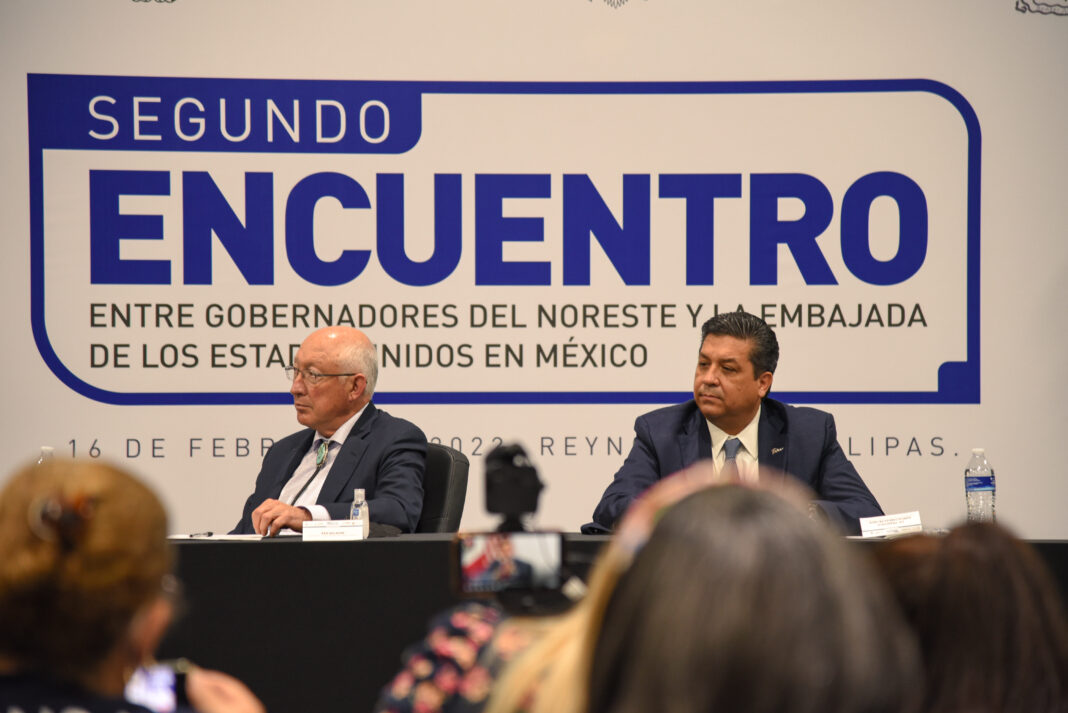The U.S. ambassador to Mexico met with Mexican border leaders Wednesday for the second time since his appointment to discuss business development, immigration and infrastructure in Reynosa before heading to Brownsville in an impromptu addition to their schedule.
U.S. Ambassador to Mexico Ken Salazar met with the northeast governors from Tamaulipas, Francisco Javier García Cabeza de Vaca, Nuevo León, Samuel García Sepúlveda, and Coahuila, Miguel Ángel Riquelme Solís, at Reynosa’s newly-opened convention center.
A meeting was held behind closed doors before they held a 20-minute press conference where no questions were taken.
“On behalf of President Biden, I can tell you that he recognizes the importance of the entire border,” Salazar said before a crowd of international journalists.
The deputy assistant secretary for Mexico and Canada of the State Department’s Bureau of Western Hemisphere Affairs, Rachel M. Poynter was also among other state and U.S. authorities that gathered to share their “regional vision” and establish cooperation agreements on border infrastructure, clean energy and migration.
The ambassador and governors reached agreements to promote the expansion and construction of international bridges and facilitate trade between them.
Immigration was a concern for all three Mexican states, where governors continue to seek ways to stem the influx of migrants, while still protecting human rights and providing alternatives for those who reach the border; though, no specific plans were disclosed.
Clean energy will continue to be favored, the leaders agreed, to prompt competition among businesses, develop jobs and guarantee the well-being of families affected by pollutants.
The meeting concluded with a parting gift from the Tamaulipas governor to the ambassador: an Tamaulipecan leather jacket. “He just needs a horse,” someone joked as the ambassador slipped into his new apparel.
The two then crossed into the U.S. and visited Brownsville after the press conference to visit the proposed site of a binational park with space for art, cultural, culinary and sports recreation.
“It sends a great message that there is a way that the northeastern region and the United States can be highly competitive, bring greater investment, generate more jobs; but, above all, ensure that we can improve the quality of life for families living on both sides of the border,” Cabeza de Vaca said.




